Welcome to this de Havilland Aircraft Museum review. Dedicated to the history of one of Britain’s most significant aircraft manufacturers, this museum is a bit of a hidden gem containing several unique examples or historically significant aircraft. It was also Britain’s first-ever aircraft museum.
Situated adjacent to the M25 motorway, the museum is easily accessible by road. Public transport links are limited but a local bus stops nearby and is on a route from Potters Bar and High Barnet railway stations. There is good parking. Standard admission is GBP12 with the usual concessions, including for emergency workers and armed forces personnel.
The museum is well laid out and exhibits are informatively labelled. There is a gift shop and refreshments are available.
A key attraction of the de Havilland Aircraft Museum is the ability to see close up the active restoration of historic aircraft and artefacts. This is very much a working museum. Initially started with a DH98 Mosquito, there are now three of the wooden night-fighters preserved at the site.
There is a very wide representation of de Havilland types from DH53 Humming Bird, through the entry to the jet age and ending with the last Hatfield-built airliner, the British Aerospace 146.
These are some of the key exhibits:
DE HAVILLAND DH98 MOSQUITO
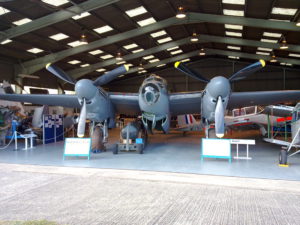
The Mosquito entered service in 1941. Initially conceived as a light bomber, the wooden aircraft was fast for its time and saw combat in several roles. Prototypes were built at Salisbury Hall, adjacent to the museum site, then transported to Hatfield for their first flights. Over 7,000 were eventually built. The museum’s collection includes one of the three prototypes alongside three other production examples.
DE HAVILLAND COMET 1
De Havilland’s Comet was the world’s first jet airliner. Unfortunately, being at the forefront of innovation came at a price. Three Comets were lost in the space of a year after initially entry into service. The type was grounded and the museum’s example, which had been operating in France, was used for tests at Farnborough during the investigation into the disasters. There is also another Comet 1A nose section preserved.
DE HAVILLAND SEA VIXEN

The unique design of the Sea Vixen was based on the earlier Vampire and Venom. Powered by two Rolls-Royce Avon turbojets, it was designed for carrier operations and saw service in the Middle East, including the withdrawal from Aden, and in Africa. The museum’s example is in the colours of 899 Naval Air Squadron, which served for a while on HMS Eagle.
DE HAVILLAND 125 SERIES 1
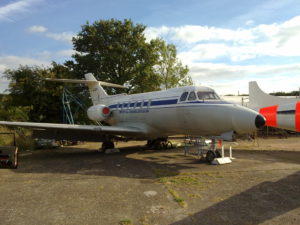
Although more commonly known in production as the HS.125 this early business jet was a de Havilland design. The museum’s example is the second prototype, and first production example, and was constructed at Hatfield. Early examples were powered by an ear-shattering pair of Bristol Siddeley Viper turbojets.
DE HAVILLAND 114 HERON
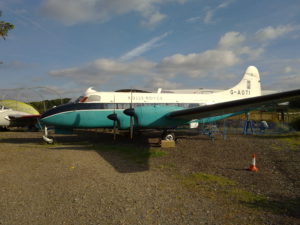
This 1950s four-engined airliner could seat 17 people and was designed to cope with unprepared airports and landing strips in remote areas. Accordingly, it had sturdy undercarriage and reliable, simple to maintain engines. The type saw service all over the world and 150 examples were built.
G-AOTI was operated until 1982 by Rolls-Royce into whose colours it has been repainted for display.
DE HAVILLAND 121 TRIDENT 2E
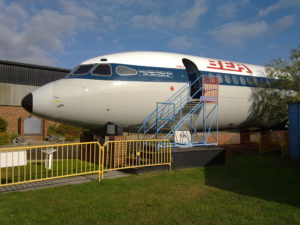
De Havilland scored several firsts with the Trident including world’s first trijet and first airliner with full Autoland capability. The initial design was hampered by being tailored to the requirements of British European Airways (BEA), the first and largest customer. This delayed production and meant that export orders were limited. Just 117 Tridents were built, compared to over 1,800 of rival Boeing 727. The museum has preserved the forward section of Trident 2E, G-AVFH.
A full list of the exhibits on display is available on the museum’s website – click here.
If you can’t get to the museum, or want to be prepare for your visit, there is a wide range of books, models and souvenirs based around de Havilland aircraft and the Mosquito in particular. Click the images below for more.


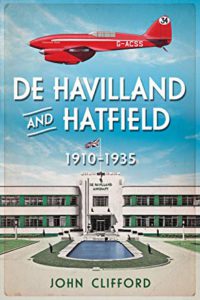


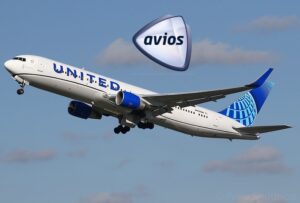
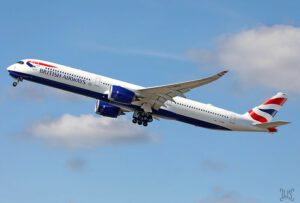
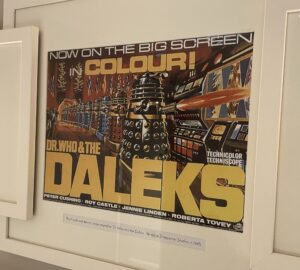
15 Responses
Hello, I believe this museum must bring huge life to the English populace. This museum would be a great tourist destination for foreigners to come and enjoy the English culture. I’m really awed by the design of the 121 trident 2E, being that it’s a first of its kind. Would really love to see it! Thanks for sharing this information, warm regards
Nice review on de havilland aircraft museum,i must commend you for writing this review and show you have take your time to do your findings and even visit there place. Everything aircraft in this museum has one interesting story or the other.i have not been to an aircraft museum but am thinking of finding time to go there soon. Because I have a feeling there is more to see than just an aircraft
I love the old planes of war from the 1940s they fascinate me. I was wondering if the museum is open year round? I see most of your pictures are outdoors so I was also wondering how much of the reconstructed aircraft is outdoors? I look forward to your response.
Regards
Jason
Hello Jason. The museum is open year-round. Quite a few exhibits are stored outdoors which can cause problems for any aircraft museum, but space is precious and at this particular museum the aircraft are well looked after.
Wow, I never knew there was any museum for aircraft especially for such aircrafts. I was so amazed looking at the pictures that I had to go check them out on Google. You really got lot of informations about them and they all sound interesting that I wish to see them physically
Hi there.
This post is one of those that will get the old ones nostalgic. I have always heard about the Havilland AIRcraft museum and the legendary Aircraft in it. De Havilland Sea Vixen really looks beautiful and has a similar design like the fighters jet which really makes it unique. DE HAVILLAND 121 TRIDENT 2E really looks recent like the Boeing Aircrafts design. This is a really lovely post
Hello there, thanks for dropping this reviews about De Havilland Aircraft Museum, I have actually heard about the museum and most especially DE HAVILLAND DH98 MOSQUITO for a very long time, I think with this review u made about them most especially about others like DE HAVILLAND 125 SERIES 1, DE HAVILLAND 114 HERON and others, I will have to pay a visit to the museum myself, although I have just checked their website through the links u shared but a visit is not bad too
Aircrafts are beginning to gain attention in recent times. People are beginning to buy aircrafts that can’t fly any more and turning them into homes and even restaurants.
I think keeping aircrafts in museums or buying them and turning them into homes or restaurants, do much of the same thing, which is to keep much in service even when they can’t fly anymore.
I’ve been to an aircraft museum only once and it was a disappointing outing because no one cared to show us around and give us history about the aircrafts there. So, I appreciate your efforts in doing just that in your article, I feel like I went to an aircraft museum just by reading your article more than when I went physically.
Thank you, Peace. It’s disappointing when a museum doesn’t help its visitors. I hope your next museum visit is better.
I found the concorde story very interesting, thank you for the review. This is an introduction to those who don’t have the aircraft experience and how I wish am among the same children that gather to witness concorde take off on its first-ever commercial flight.I would love to read The Concorde story by Christopher Orlebar.Thanks for this review.
best regards…
Nice work Rob. I enjoyed every piece of information in this post. While going through this piece, the way you described the aircraft I was at the museum. The World needs more of the De Havilland 114 heron aircraft that can land in remote areas, with unprepared airports. I admire the great works that went into constructing these aircraft. This is a place I need to include in my itinery when next I visit England, hopefully before the year rounds out.
Thanks, Tolu
Fascinating article, this will definitely be on my list to see when I visit the UK. I do wonder, aside from the DH98, what sort of exhibits do they have to represent the second and possibly the first world wars? Do you think the museum will be able to get its hands on the other two prototypes of the DH98 Mosquito?
Thank you, Nicole. de Havilland was formed in 1920, so after the first world war. The Mosquito was the primary combat aircraft produced by the company in the second world war, though a great many airmen were trained in the company’s biplanes. The museum has the only surviving prototype, but there are around 30 others in existence around the world, including four airworthy examples.
Mr. Rob,
Thanks for sharing this important article. I should mention what a design that was! Among all of those aircraft The DE HAVILLAND SEA VIXEN just enough to blow up my mind. Well introducing people to past is really awesome. With the help of this a human being can learn why they should respect their “Ancestor” by knowing what have they done for them. Where the world was and where the ancestor lead us to.
Now lets come to the point no matter what happens I am coming to see DE HAVILLAND SEA VIXEN.Mmm this might sound like stupid but curious mind wants to know sir,
🔹Are the foreigner visitors allowed to visit?
Please let me know sir!